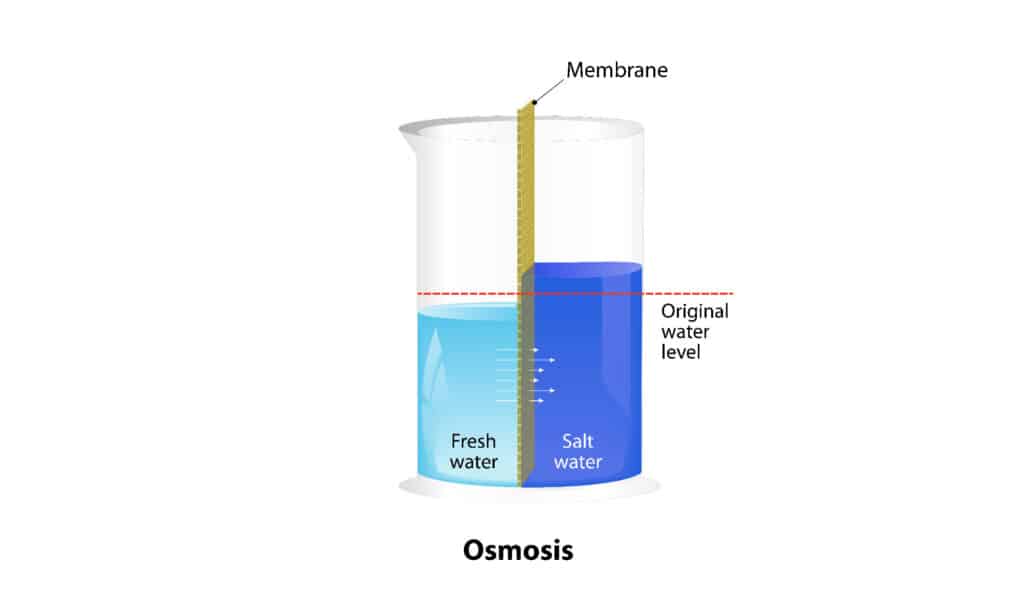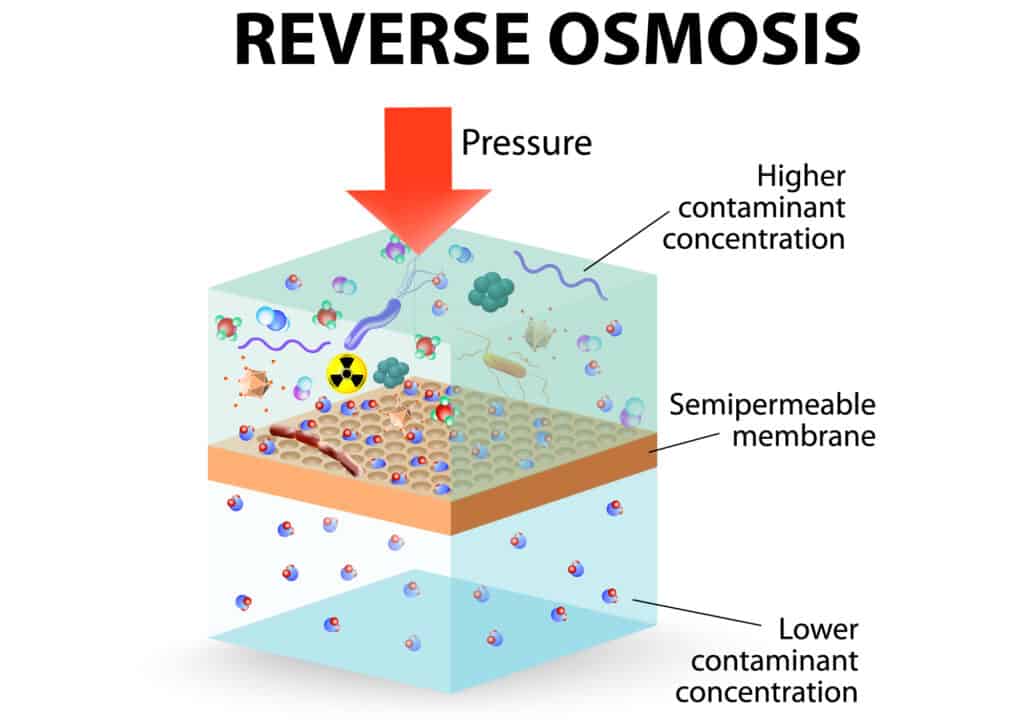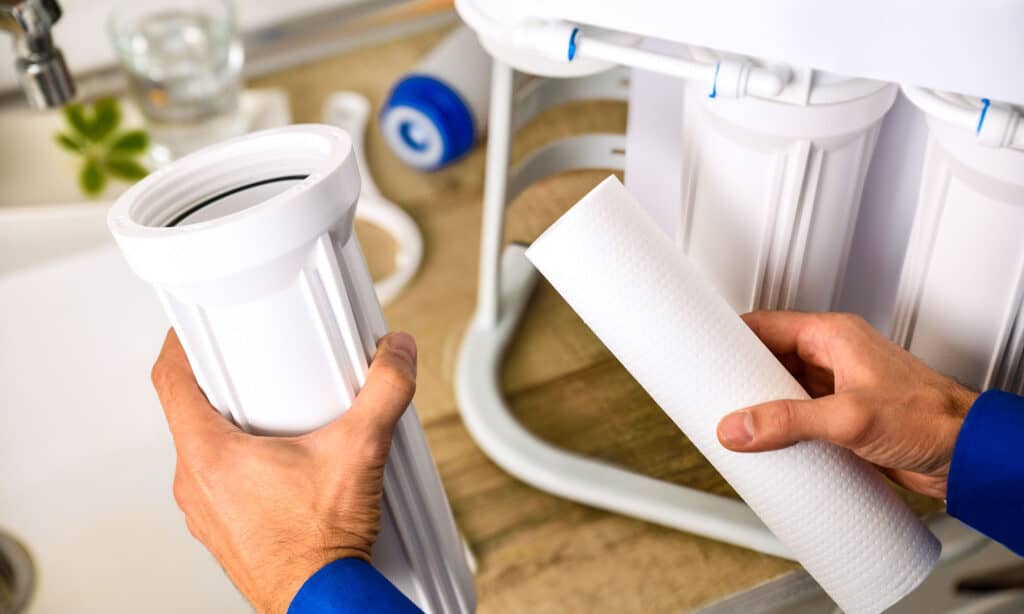If you ever take the time to look at the back of your bottled water, you may notice that it says “filtered by reverse osmosis.” Regardless of what brand of bottled water you may prefer to purchase, many will see some variation in this sense. However, what is reverse osmosis water exactly? Not many people know, so we created this complete guide to help you better understand the process behind your water.
Ready to learn what reverse osmosis water is? Keep reading below!
What Is Osmosis?
Before you learn what reverse osmosis is, it’s important to have an understanding of what regular osmosis is.
Typically, you’ll hear about osmosis in cell biology. Here, this term is used to refer to how substances move in and out of cells, the living building blocks of our bodies (as well as everything else from plants to insects!).
In order for osmosis to occur, you’ll need to have two different areas with different concentrations of a substance, usually a liquid. The most common example is salt water versus pure water. With osmosis, the goal is to create balance. As a result, lower concentrations will diffuse to higher concentrations. This means that if you were to place salt water and regular water in a container with a divider that the water could go through, the pure water will move across the barrier to combine with the salt water. Thus, the lower concentration of salt is moving to the higher concentration of salt to create balance.

Osmosis refers to how substances move based on concentration.
©Designua/Shutterstock.com
What Is Reverse Osmosis?
Now that you know a little bit more about osmosis, you can learn about reverse osmosis.
Reverse osmosis is a form of water purification. It is one method of filtration, which involves removing solids and dissolved solids from water in order to purify it. It also has the ability to remove microorganisms and pathogens from water. This makes it safe for drinking.
Osmosis works at a cellular level, which means that it deals with molecules. As a result, reverse osmosis is the same, allowing you to create pure H20 from otherwise contaminated water.

Reverse osmosis is a form of water purification.
©Designua/Shutterstock.com
How Does Reverse Osmosis Work?
Reverse osmosis works by forcing a higher concentration to move across a barrier into a lower concentration—the exact opposite of osmosis. However, because this isn’t a natural process, it takes force to be applied.
When you’re using reverse osmosis for drinking water, there’s actually a specific process. First, it is a four-stage filtration process. This means that the semipermeable membrane—the barrier that the concentrations have to cross through—is made up of four different layers. Typically, these layers consist of a sediment filter, pre-carbon block, reverse osmosis membrane, and post-carbon filter. This ensures that you’re getting the purest filtration.
The contaminated or otherwise unclean water is then forced through this barrier. This causes the barrier to strain out the contaminants. As a result, clean water is left on one side, while solids and dissolved substances are either caught in the filter or left on the other side.

The reverse osmosis principle works in direct opposition to osmosis.
©Designua/Shutterstock.com
Benefits of Reverse Osmosis
There are many benefits of water from reverse osmosis. First, it is one of the main ways of filtering water. This means that it provides a clean water source that is safe for drinking. In fact, this process can remove almost all contaminants, both debris and pathogenic, to provide pure water.
Reverse osmosis is also considered to be an eco-friendly way to purify water. Unlike other forms of purification, such as distillation, reverse osmosis requires little to no energy use. Instead, it uses the natural forces of pressure and the cleaning abilities of physical filters to ensure that your water is safe to drink.
It also provides water on demand. Because water is being forced through the filters and emerging clean, it’s a near-instantaneous process. With other purification methods, you may have to spend time cleaning the water, which requires a way to store the clean water for later use.

Reverse osmosis is an environmentally friendly way to purify water.
©Alex Stemmers/Shutterstock.com
Does Reverse Osmosis Produce the Best Water?
Reverse osmosis actually isn’t the cleanest type of water. Filtration isn’t perfect. As a result, although it’s less than a percent usually, some contaminants may slip through. Distilled water is considered to be the cleanest because it involves boiling the water and collecting the vapor.
Reverse osmosis may also not lead to the best-tasting water. This is because the flavor is derived from the minerals found in water. These are often filtered out in the reverse osmosis process, however.
When it comes to if reverse osmosis is a safe, clean water source, you can rest assured knowing that reverse osmosis is a great option for reaching your daily water requirements.

You may not get the best-tasting water from reverse osmosis.
©Davizro Photography/Shutterstock.com
The photo featured at the top of this post is © Alex Stemmers/Shutterstock.com
Thank you for reading! Have some feedback for us? Contact the AZ Animals editorial team.







